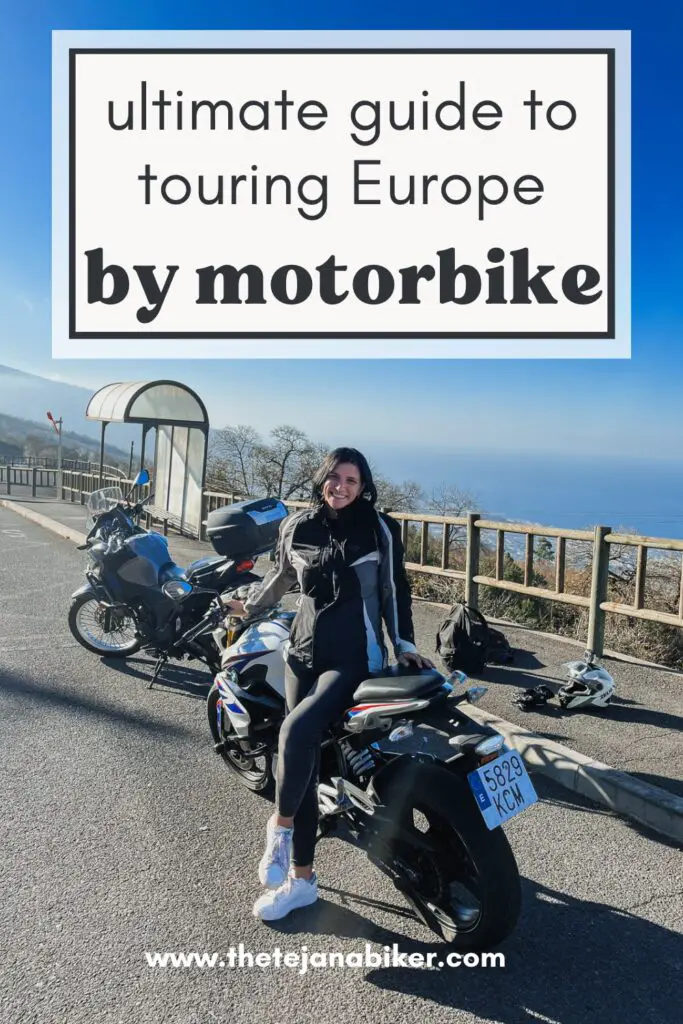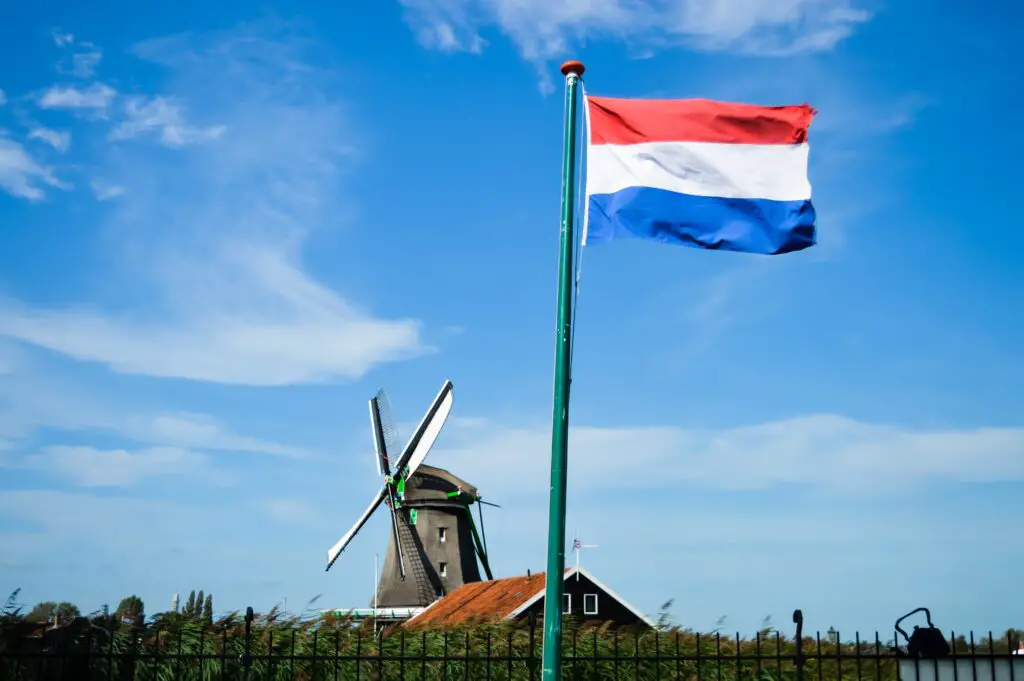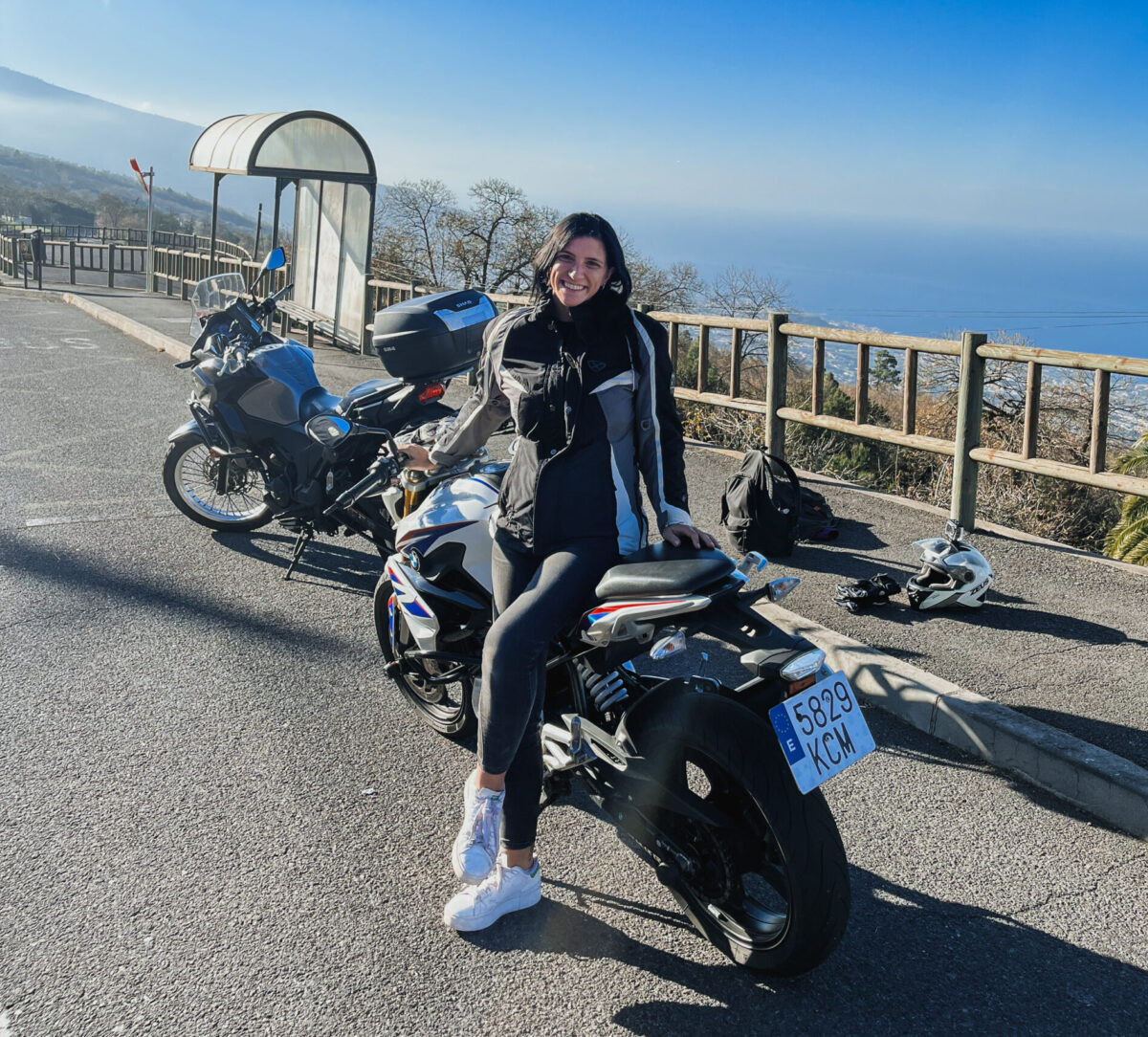
Please note: This site may contain affiliate links to products. I may receive a commission for purchases made through these links, at no extra cost to you.
Contents
When you’re planning on touring Europe on a motorbike, you probably have a lot of questions and basics that you should know! Check out this guide to know the motorcycle laws in Europe and other advice for your motorcycle touring trip!
I obviously love riding my motorbike through Europe, but I had a lot of questions when I first started! I was a bit lost, so I hope this guide will help you discover everything you need to know, so you can skip ahead to the fun part: riding!
The basics of touring Europe on a motorbike
Motorcycle riding requirements in Europe
If you have a European motorcycle license you can drive in any European country without problems. However, as you already know, there are special requirements for the type of motorbike you can drive. Here’s a helpful chart from The Biker Insurer (UK based) to help you remember:
Bike categories, ages and license requirements for Europeans
| Licence category | Vehicles you can ride | Requirements for licence | Minimum age |
| AM | Mopeds with speed range of 25 km/h to 45 km/h | Compulsory basic training (CBT), theory test, practical test on all powered 2 – wheeled moped | 16 |
| AM | Small 3 wheelers (up to 50 cc and below 4 KW) | CBT, theory test, practical test | 16 |
| AM | Light quadricycles (weighing under 350 kg, top speed 45 km/h) | CBT, theory test, practical test | 16 |
| Q | Same as AM plus 2 or 3 wheeled mopeds with top speed of 25 km/h | Granted with AM | 16 |
| A1 | Light motorcycle up to 11 KW (and a power-to-weight ratio not more than 0.1 KW per kg) and 125 cc | CBT, theory test, practical test | 17 |
| A1 | Motor tricycles with a power output not more than 15 KW | CBT, theory test, practical test | 17 |
| A2 | Standard motorcycle up to 35 KW (and a power-to-weight ratio not more than 0.2 KWper kg), bike mustn’t be derived from vehicle more than twice it’s power | Direct access route – theory and practical Progressive access route – 2 years experience on A1 motorbike and a further practical test | 19 |
| A | Unrestricted motorcycles in size/power, with or without a sidecar, and motor tricycles with power output over 15 KW | Direct access route – CBT theory and practical (you must be at least 24) Progressive access route – held an A2 licence for a minimum of 2 years – practical test (21 or over) | 24 (direct) or 21 (progress – ive access) |
If you have an American motorcycle license, you can drive ANY motorcycle with your own state issued license. The US does not have different levels of licenses for different sizes of motorbikes. You can drive with your state, class M license for the duration of a year (in MOST European countries. Remember to check specific requirements!). However, some companies or countries may ask you for an International Driver’s Permit (IDP). This is a paper document that does not replace your license but accompanies it. It is a booklet that is translated into many different languages around the world.
You can get your IDP from your local AAA chapter. It costs $20 USD and you will need to include:
- Application form
- Two original passport photos (can get these done at Walgreen’s or CVS Pharmacy)
- Your current driver’s license
Renting a motorbike in Europe
When you rent a motorbike in Europe, they will ask for your driver’s license and how long you have held the license. Usually, you need to have held your license for at least two years (although for Americans they don’t know when the class M was added on to it).
Europeans are issued a license that stays with them their entire life so it’s easy to see how long they’ve held the license. For us Americans though, we change and renew our license every few years. Try to bring an old license or at least a photo of an old one to prove that you have held a driving license for several years.
Motorcycle laws in Europe
For the most part, a lot of European countries have the same laws, governed by the European Union, with a bit of variation.
Some of the common rules include:
- Motorcycle helmet laws: A helmet is required in ALL EU countries and must meet ECE 22.045 (double check this as not all foreign helmets do)
- High visibility vest needs to be stored on the bike in case of emergencies
- Lane splitting is legal
Not all countries however, have the same motorcycle laws. Be sure and check the specific country to see what exactly is needed.
View country specific motorcycle driving guides
Click the image below for Country Specific Driving Guides
France
Netherlands
Spain
Driving a motorbike in Europe
How lane splitting works in Europe
Lane splitting varies from country to country, where some countries tend to drive more aggressively than others. Much of this depends on how big the lanes are and whether the cars accommodate for motorbikes lane splitting or not.
In general though, lane splitting is very used and very common. At a red light, most of the motorbikes will all go in between the lanes or even outside in order to get to the front of the line. You can choose not to of course, but (depending on the country) it’s pretty accepted. When you lane split, be sure to put on your warning lights or if you don’t have them your blinker, as it helps cars to see you.
The different speeds in the lanes
In Europe, they really follow the whole “left lane is for passing.” If you are in the left lane and are going slower than the flow of traffic, the person behind you will flash their lights at you. It’s not meant to be rude, just that you shouldn’t be in the lane unless you are passing.
When there are multiple lanes, the same rules apply and it’s fairly strict on the most left being the fastest lane and the most right being the slowest. The middle lanes are different levels of how fast you are going as well.
The unofficial motorcycle lane
When you’re in a big city, you may find that other motorcyclists and scooters are using the “unofficial motorcycle lane.” This is right in between the left lane and middle lane and cars in these two lanes are aware that there will be motorbikes coming through. It’s easier to lane split because cars will try to give you the space needed.
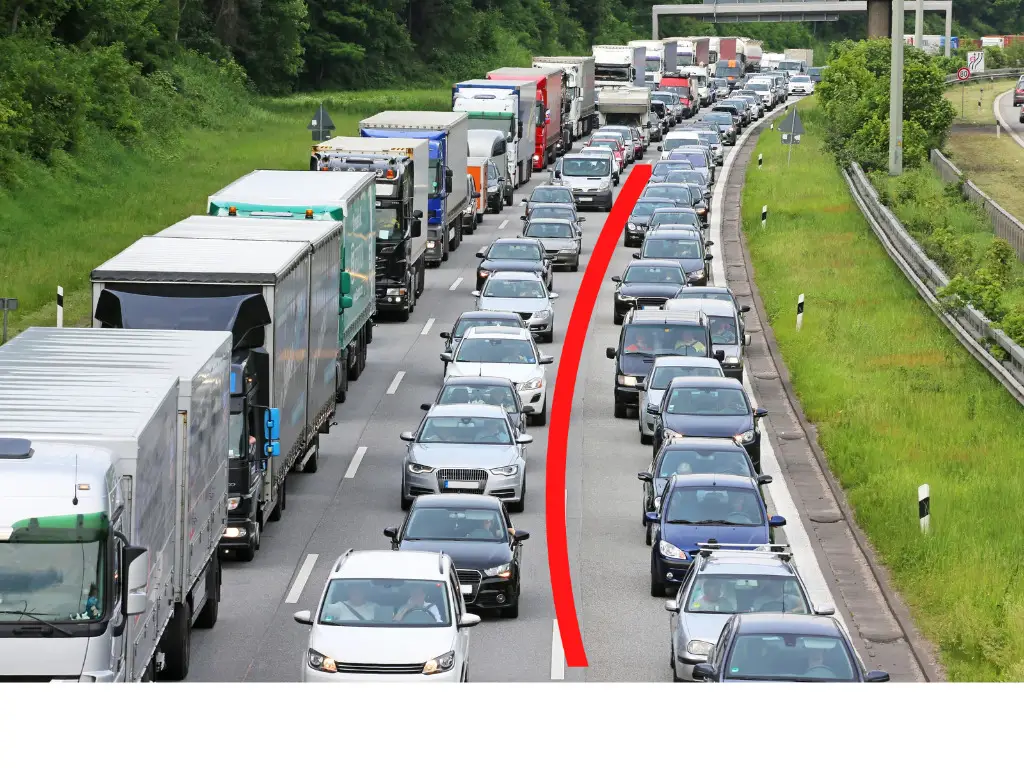
Common road signs
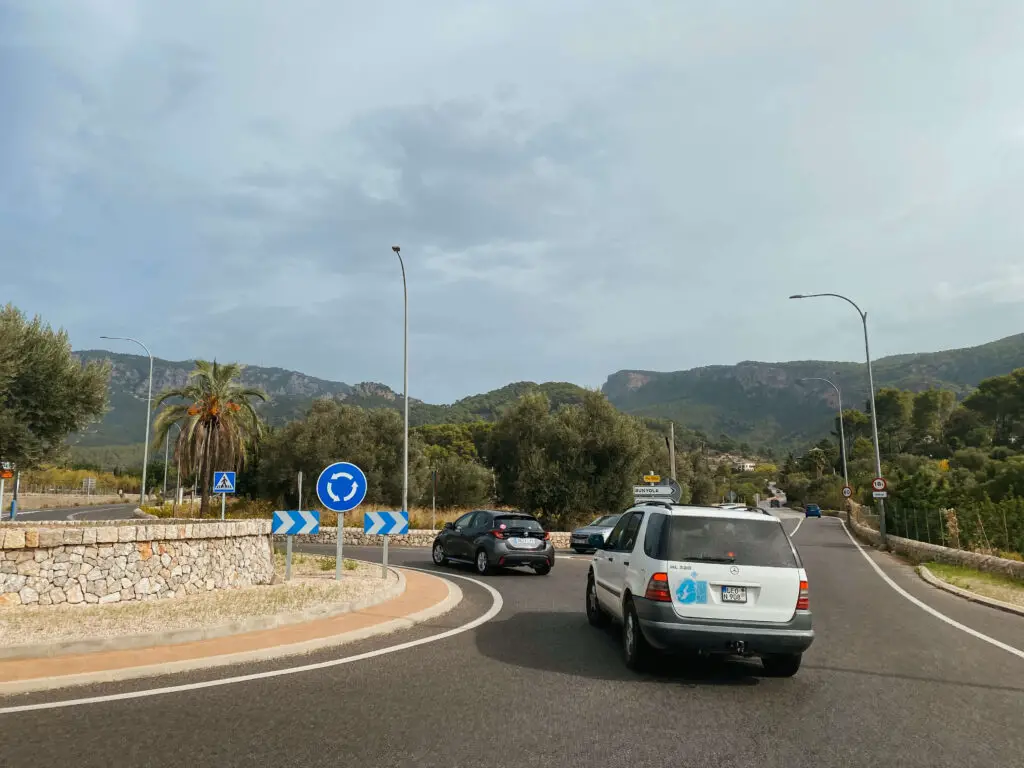
Familiarize yourself with all the common road signs in the EU! Use this road sign pdf to guide you! Even if you leave the EU with your motorbike, most of the signs will be the same or at least similar.
What to do in an emergency
The shoulders on highways are large enough for you to easily pull over. There are also emergency phone booths scattered fairly frequently across major highways. If you need to get off your bike, you must put the high visibility vest on.
If you need to call for an emergency, the phone number in the European Union is 112
Crossing borders
When in the EU, most of the time the border isn’t clear. You don’t need to stop and have someone check your passport; you just go on through.
In Switzerland you will still pass through a section where they used to check passports, but just slow down and you’ll be on your way.
Outside of the EU, there will be border crossings where you’ll need to wait 30 mins to an hour to get through. On a motorcycle in the summer, this can be really long so be prepared!
Other things to look out for when touring Europe on a motorbike
Tolls
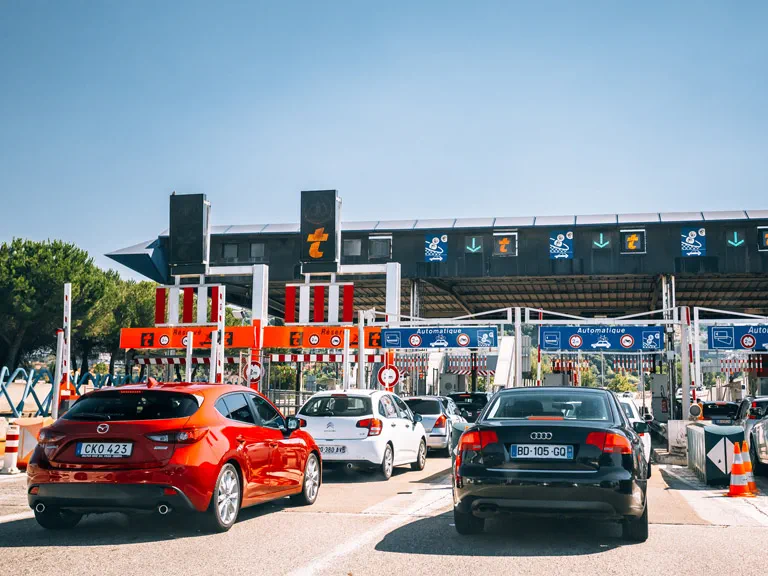
The sign for toll tags all over Europe is the orange T symbol. If there is a green arrow beside the T symbol, you can still go through and pay by cash or card– it just means both are allowed. The ones with orange barriers are only for Toll tag holders.
There will be different lanes for paying cash or card, and usually different ones for cars or trucks. If you have any issues, there is usually a help button to call someone to assist you.
Warning: Tolls in Europe are FREAKIN’ EXPENSIVE!
Especially in France and Italy. Try to plan out costs before you go! Usually toll roads can save you an entire hour or two on a route through Europe, but there is a cost to it. Plan accordingly.
Being pulled over
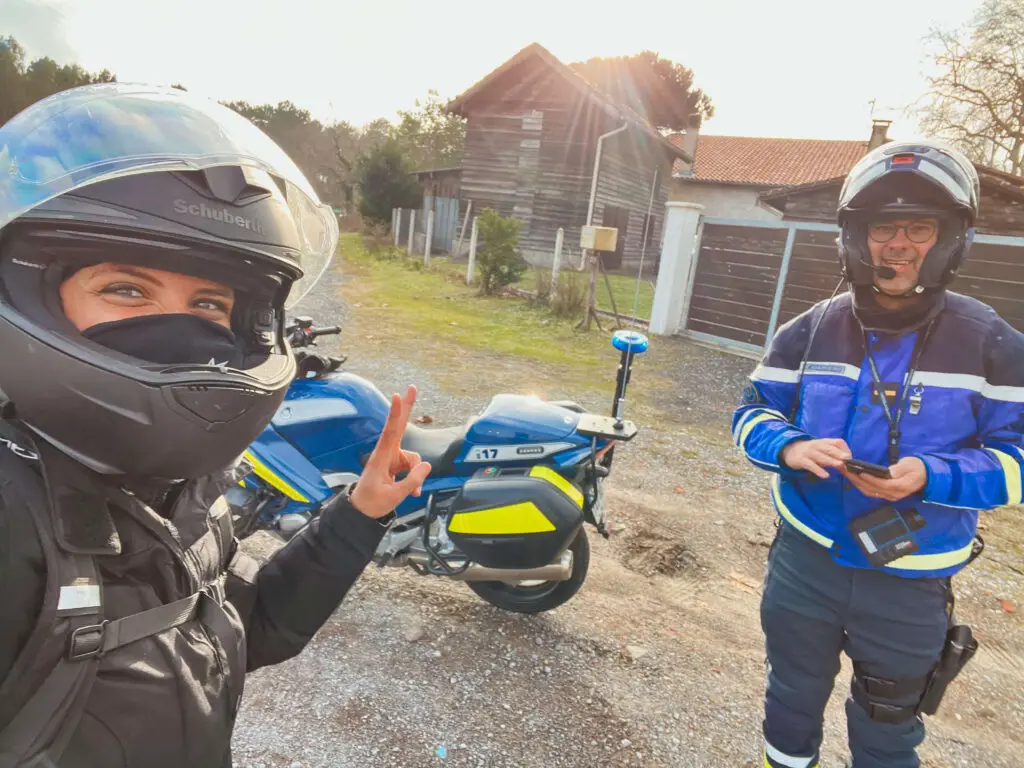
Police will normally pull up next to you and motion towards you that they would like to speak. You then find a safe place to pull over and stay on your bike, waiting for them to come to you. If you’re on a highway they will likely motion to you to follow them at the next exit.
Usually they’ll ask for the title of your motorbike (if it’s your own), your passport, and your license.
Planning your motorcycle roadtrip
When to go
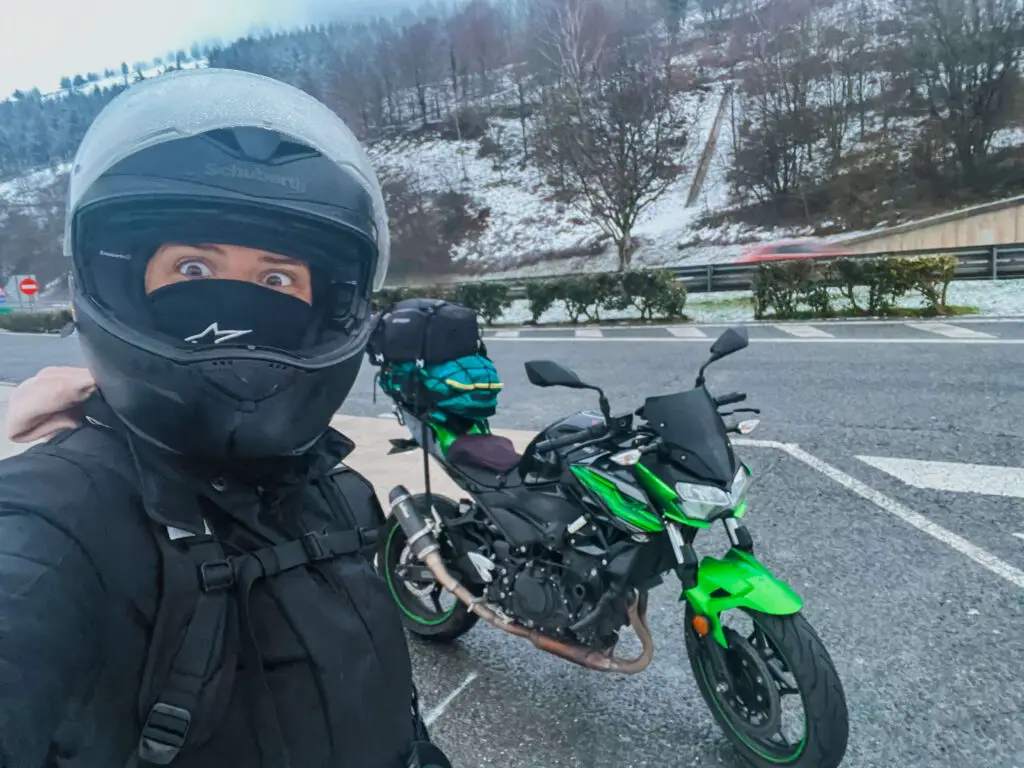
Of course it’s a bit difficult to generalize for all of Europe, but you can at least think to avoid the coldest and the hottest months. Spring usually comes with a lot of rain so I would recommend late summer and early fall as the best months for touring Europe on a motorbike.
It’s really best if you get a European SIM card while you’re touring Europe on a motorbike. Most companies have plans that allow you to use your data in all of the EU countries, and it’s a lot cheaper than paying for an international plan in your home country! Try to buy a European SIM card and plan when you first arrive and before you start your trip.
I recommend the company Orange, because they have a nice plan and presence in many European countries!
